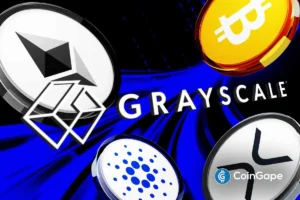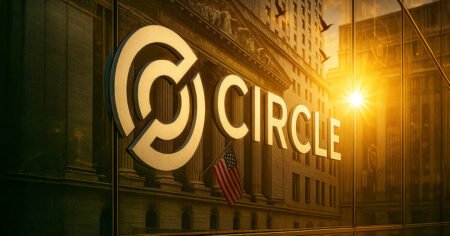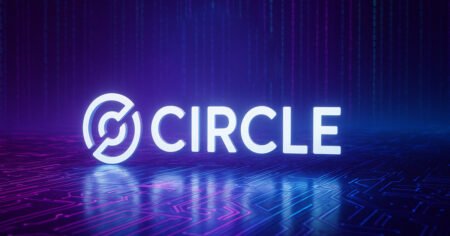Analyzing Stablecoins: ZachXBT’s Critique of RLUSD and USDC
The world of stablecoins has gained significant attention, particularly as digital currencies are increasingly adopted in global transactions. Recently, blockchain investigator ZachXBT has raised concerns regarding two notable stablecoins: Ripple’s RLUSD and Circle’s USDC. His critiques highlight potential issues surrounding compliance and the strategies these issuers employ to drive adoption. In a developing narrative within the cryptocurrency landscape, these concerns shed light on the complexities of determining what truly constitutes organic growth in the realm of stablecoin issuance.
Ripple’s RLUSD: The Questions of Authenticity and Adoption
ZachXBT’s criticisms of Ripple’s RLUSD stem from what he perceives as a lack of an authentic user base. In a now-deleted social media post, he expressed skepticism about the coin’s growth trajectory, asserting that it primarily relies on paid partnerships to create an illusion of organic development. This point sparked a debate among Ripple supporters, with one stating that the stablecoin is actively used within Ripple’s payment network, which boasts partnerships with millions of merchants through platforms like AEON and AlchemyPay.
Although ZachXBT highlighted the reliance on financial partnerships as a questionable strategy, Ripple advocates countered by asserting that paying for partnerships is a common practice among major stablecoin projects. This defense underscore an industry-wide truth: scaling often necessitates financial incentives. Despite differing perspectives, RLUSD has demonstrated impressive market traction since its launch in December 2024, achieving a market capitalization exceeding $455 million.
The Regulatory Framework Behind RLUSD
Launched under a New York trust license, RLUSD is designed as a US dollar-pegged digital asset. It is backed by a combination of cash reserves and short-term U.S. Treasurys, ensuring compliance within robust regulatory frameworks. This strategic design aims to make RLUSD a reliable option for global transactions, catering to users who seek both stability and compliance in their financial dealings. As regulations continue to shape the cryptocurrency ecosystem, the ability of stablecoins to adhere to stringent guidelines will be paramount for their wider adoption.
Circle’s USDC: Allegations of Compliance Failures
ZachXBT didn’t stop at critiquing Ripple; he also turned his attention to Circle’s USDC, the second-largest stablecoin by market capitalization. Allegations surfaced that North Korean IT operatives have utilized USDC for illicit fund movements, punctuating concerns about the stablecoin’s compliance mechanisms. ZachXBT criticized Circle for purportedly failing to identify and freeze suspicious activities on the platform, which runs counter to their claims of having rigorous compliance protocols.
A significant point of contention arose regarding Circle’s response to illicit transactions, particularly those connected with North Korea’s Lazarus Group. ZachXBT previously claimed that Circle delayed blacklisting specific addresses tied to this hacking organization, which he suggested allowed Circle to benefit financially from transactions directly linked to illegal activities. This has heightened scrutiny on Circle’s compliance measures and calls into question the effectiveness of its protocols.
The Broader Implications of Compliance in the Stablecoin Realm
The debates surrounding RLUSD and USDC reveal a crucial focus on compliance within the stablecoin space, yet they also reflect broader tensions between growth strategies and regulatory responsibilities. As the cryptocurrency sector grapples with evolving regulations, the ability to maintain compliance while ensuring organic growth becomes increasingly vital for stablecoin issuers. The challenges faced by both Ripple and Circle highlight the need for transparent practices and adherence to regulatory measures to foster user trust and market credibility.
This narrative encompasses not only the issues at hand for Ripple and Circle but also extends to the larger stablecoin market as a whole. With growing scrutiny from regulatory bodies worldwide, ensuring compliance while driving user adoption is no longer just a strategic choice — it has become an essential component for long-term sustainability within the cryptocurrency ecosystem.
Looking Ahead: Industry-Wide Lessons from ZachXBT’s Criticisms
ZachXBT’s critiques serve as cautionary tales for both existing and prospective stablecoin issuers. In a landscape rife with rapid innovation, the balance between organic growth and necessary partnerships remains delicate, and companies must tread carefully to maintain credibility. For Ripple’s RLUSD, the focus will need to shift toward building a genuine user base, perhaps by augmenting its integration within payment networks and emphasizing the unique features that differentiate it from competitors.
For Circle, the implications of compliance failures are more significant, given the potential reputational damage tied to allegations regarding illicit usage of USDC. Moving forward, implementing stringent detection mechanisms and enhancing transparency will be essential for bolstering user confidence. These lessons highlight an important truth: the path to sustainable growth in the stablecoin sector is paved with compliance, trust, and a commitment to ethical practices.
Conclusion: The Future Landscape of Stablecoins
As stablecoins like RLUSD and USDC continue to face scrutiny, it is clear that the paths toward adoption and compliance are littered with challenges. ZachXBT’s criticisms illuminate the need for vigilance, adaptability, and sincere efforts to create a stable, trustworthy environment for crypto users. The ongoing dialogues concerning these stablecoins will undoubtedly shape the future landscape of cryptocurrency, as stakeholders strive to balance innovation with regulatory integrity, ultimately paving the way for a more robust and reliable stablecoin economy in the years to come.

















